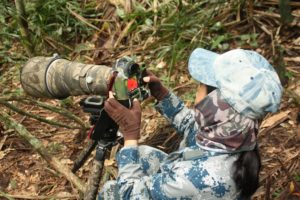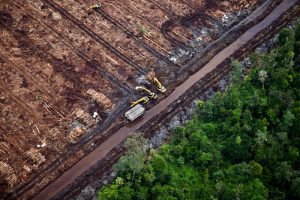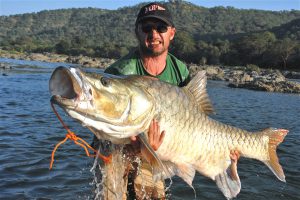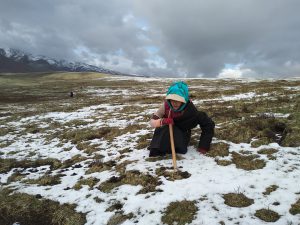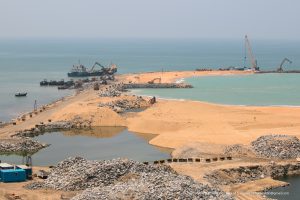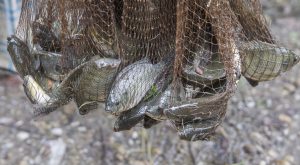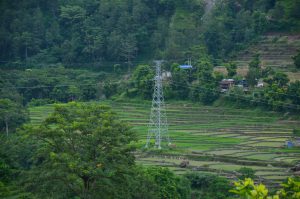This interview is republished from Yale Environment 360
Over centuries, even millennia, indigenous communities have developed interdependent systems of agriculture and forestry that are uniquely suited to the ecological requirements of the land they inhabit. Yet even today, says Charles M Peters, a curator of Botany at the New York Botanical Garden, that skill and knowledge often remain unacknowledged, with some government officials and conservationists arguing that indigenous communities should sometimes be excluded from protected lands that are part of their historical territory.
In an interview with Yale Environment 360, Peters – author of the recently published book, Managing the Wild: Stories of People and Plants and Tropical Forests – discusses what he has learned from 35 years of working with indigenous forest communities; explains how indigenous farming, even slash-and-burn agriculture, can actually improve forest health; and reflects on the need to enlist indigenous groups as allies in the struggle to preserve and restore tropical forests.
“We need everyone’s input to solve this problem,” Peters told Yale e360. “I’m saying [forest dwellers] have incredible knowledge… There are tracts of forest all over the world that have been intensively managed for generations by local people, and that’s precisely why they are still forests.”
Yale Environment 360: Governments and NGOs often think they know better how to manage forests than the communities that live in them. You are suggesting that local people know a lot more than we give them credit for.
Charles Peters: Local people know a lot more about how to manage tropical forests than we do. Indigenous forest-dwelling communities need to be at the table when decisions are made about tropical forests because there is this incredible body of traditional knowledge and experience in this replicated experiment that they have been engaged in that has been going on in the tropics for hundreds and thousands of years.
e360: How do you make use of this resource of traditional knowledge in your own work with indigenous groups?
Peters: The way interventions usually go is that you have some idea and you go to the community and you try to implement that idea. In most cases, the agenda involves some particular species and protecting that. It really has nothing to do with what the community itself might know how to do and what is in their best interest.
My method is different. We go in and the first thing we do is we try to define the demand for a given forest resource through household interviews. We ask people, for example, what did they make their house out of? Where did they get these materials? We talk about rattan, we talk about bamboo, medicinal plants, forest fruits. Then we go into the forest to find out how much of these resources are out there. We quantify the demand and supply for a particular resource. When you put those two things together, you can figure out how big a piece of forest the community needs to produce the resources that they require.
There is a way to do slash-and-burn incorrectly, but properly done it is a really amazing solution to enriching sterile tropical soils.
e360: You also train local people to do things that professional foresters usually do, like conducting forest surveys and measuring the growth of trees.
Peters: That’s right. We teach them how to do growth studies and [tree] inventories so that later on they can monitor the forest themselves. The community needs to know how much the timber or the rattan grows in a year, because that is all that you can sustainably harvest… This also empowers them to deal more effectively with their governments. Nowadays, to continue gathering forest resources, somebody has to give you permission – the forest department or the central government. That usually involves writing a management plan, applying for a permit. To do that, you need to provide numbers, you have to provide data on things like the stock and yield of a resource.
e360: The idea that local people should even be allowed to use resources in the forest is not universally accepted by conservationists. In the past, there was an emphasis on creating pristine forest reserves that exclude humans and human activities. Was that wise?
Peters: In recent decades, we’ve moved a bit away from this strict protectionist conservation mindset – to kick the people out of the reserves. In many ways, though, we are still in that mindset. But some people are coming around to the idea of allowing local people to make some use of these resources.
That is what happened in Brazil, for example, with the extractive reserve idea. It is a whole new kind of protected area that gives communities the right to extract rubber, Brazil nuts, and other products from pieces of forest as a form of conservation. There are millions of hectares of extractive reserves currently in Brazil. Granted, the execution of the extractive reserve has not always been very good at all.
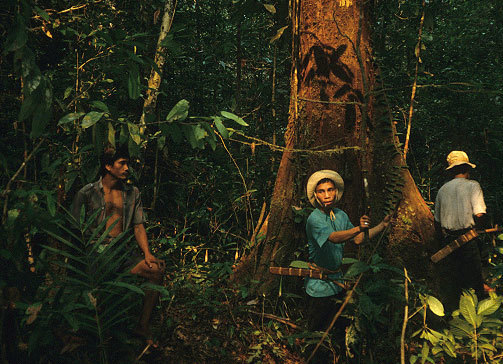
Members of the Kenyah Dayak indigenous group conducting forest surveys in Western Borneo in the early 1990s (Image: Charles Peters)
e360: You mentioned Brazil. You have worked extensively in the Amazon. Some people believe that the form of slash-and burn agriculture that is practiced there is destructive to the rainforest. You have a different view.
Peters: There is a way to do slash-and-burn incorrectly, but properly done it is a really amazing solution to enriching sterile tropical soils. In temperate soils you can farm them every year – they were glaciated, it’s new, mineral-rich dirt. Most of the nutrients are in the soil. But in the tropics and especially the Amazon, which gets heavily rained on, the soils are leached out and nutrient-poor. Most of the nutrients are in the vegetation, not in the soil. So when you clear the forest there is not much left. If you try to farm that land as we farm in temperate zones, it doesn’t work. The soil is not good enough, you have to add a huge amount of fertiliser and other inputs. But when you take a small piece of forest and burn it, then corn, rice, cassava, or a variety of other crops are planted in the ash. These sites are farmed for several years until excessive competition by weeds and declining yields make additional cultivation untenable. Eventually the forest returns.
e360: It is an agricultural system that works in the tropics.
Peters: If you were looking for someone who could help you farm the moon, these are the people who could help you figure that out. So this is why I’m saying they have incredible knowledge. We don’t have to give them complete control, but let’s ask them what they think before we tell them what they need to do.
e360: I’ve done some reporting from the Amazon. I was frankly surprised by how beautiful some of the small farm plots in the jungle were. They were full of fruit trees, cassava plants, flowers, in some cases even fish ponds, with a great variety of birds and wildlife, especially at the margins.
Peters: You know you see advertisements from some conservation group with pictures taken immediately after the smoking burn, and it looks horrible. But come back to the same site 10 years later and things look very different. All of this is a bit insidious, the way we disenfranchise the people who actually know how to farm these areas, who actually know something about the forest and how it regenerates.
We have learned basically nothing from them because we don’t even see that they have any useful information. That is totally incorrect.
e360: You have argued that not only do indigenous farmers not destroy the forests that they depend on, but they frequently improve them. How so?
Peters: For the longest time we thought that indigenous people just put in their swiddens [temporary agricultural plots formed by cutting back and burning off vegetative cover] and just walked away from it and cleared another piece of forest. But we’ve been finding, to the contrary, that the fallow [open area] that they leave, they are actively managing that, they are enriching it with things that are of use to them. In addition to agricultural crops, they plant fruit trees, timber species, thatch palms, medicinal plants, and rattan canes in their fields. The villagers return to their fallows periodically to weed, to clear the underbrush, remove unwanted tree species, and, depending on the season, they collect fruits and palm thatch. Far from being abandoned, much of the fallow vegetation created by indigenous farmers in the tropics is enriched with useful species and carefully managed. For them, there is no clear line between agriculture and forestry. Forest succession is carefully controlled, rather than arrested or inhibited.
e360: You write in your book about working in Borneo where the Kenyah Dayak people manage subsistence orchards of amazing complexity. Can you talk about that?
Peters: I’m a forester and I know what foresters can do in temperate forests, for example. We do really well managing one species like pine or spruce. In a hardwood forest maybe we can do a couple of species of oak and then we move into the tropics and maybe we find four or five species that we feel are merchantable – so we cut four or five species. But the trees that come up to replace them are totally different species and so we exhaust the forest and we don’t have anything more to cut.
But these guys in Borneo are managing 150 species of trees in a hectare. So we Western foresters can’t manage four species in a plot, and these people are managing 150. As a forester you just go, “Oh my God, how do they do this?” Because to do what they are doing you have to pay attention to every one of those species and ask how it is doing and what its requirements are. Are there seedlings and saplings? Are you ensuring that once you harvest that tree there will be others of its kind that take its place? It’s a very complicated and wonderful thing. And all of this is being accomplished with traditional knowledge, as opposed to putting in plots and counting things [as Western foresters do]. How are they doing this? How did they learn this? They learned it by trial and error over a thousand years and more.
e360: They have a lot to teach us.
Peters: We Western silviculturalists have learned basically nothing from them, because we don’t even see that they have any useful information. Well, that is totally incorrect. Do you know the one thing that has been transferred from Western forestry to traditional forestry? Do you know what the one thing we have given them is? We have given them chainsaws.
e360: Which is a mixed blessing.
Peters: Yes, a mixed blessing.
e360: What lessons have you learned personally from working with indigenous foresters?
These community silvicultural systems… are operating at the seedling and the sapling stage to create a forest that you won’t see for decades in the canopy.
Peters: We conventional foresters operate at the level of adult trees – we manage forest composition at the adult tree stage. What all of these community silvicultural systems have in common is that they are operating at the seedling and the sapling stage to create a forest that you won’t see for decades in the canopy. They are actually doing something that to an outsider is invisible, but that is producing lasting changes because they are controlling precisely what is able to regenerate and what is not.
e360: We sometimes speak about virgin wilderness untouched by human intervention. But you suggest in your book that much of what we call pristine forest has actually been created by human interventions over a period of centuries.
Peters: That’s right. You walk through it, you think you are in pristine forest and the people tell you, “Oh, no, no, this is an orchard that we have created.” These forms of indigenous resource management had been invisible to us. There are tracts of forest all over the world in Brazil, in Africa, in Southeast Asia that have been intensively managed for generations by local people and that’s precisely why they are still forests – because they are important to local communities and carefully managed by them. And then somebody in a district forest office comes along and draws a circle and says, “This is a virgin protected area” and kicks the people out – that sort of thing happens a lot.
e360: You write about numerous cases where indigenous people have successfully managed, and in some cases saved, their local forests from destruction. Do we know how much forest they have succeeded in saving?
Peters: We don’t really know how big it is globally. But it is probably getting smaller every year because it gets no support. It is not recognised and somebody – oil companies, palm oil interests, you name it – is paying these people a lot of money to do something that is in nobody’s interest. These systems of indigenous management are really fragile. No one thinks that they know what they are doing, people think that [forest dwellers] are the problem and not the solution. And when you receive no support, when someone comes in and says, “We want to buy your timber and here’s the money,” and you don’t have any alternative, you will sell it off.
